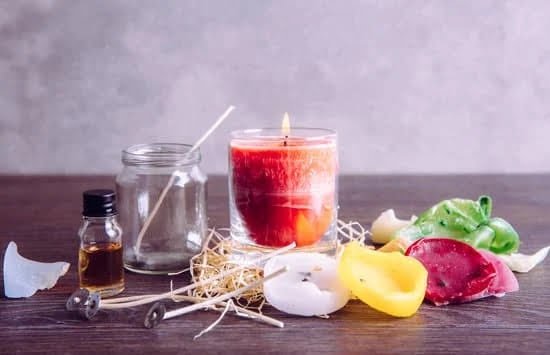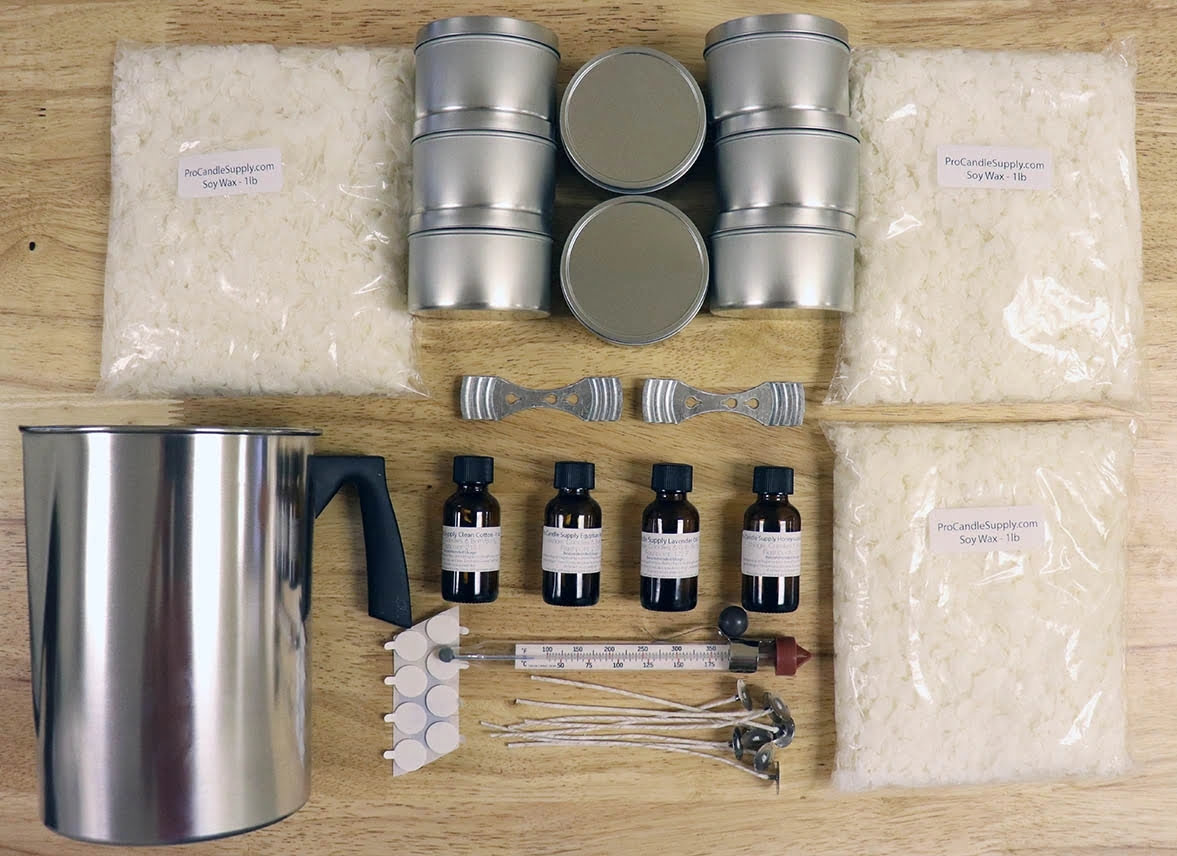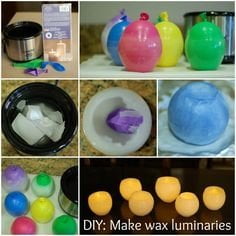In the world of candle making, the possibilities are endless. From exploring different scents to experimenting with unique designs, candle enthusiasts find joy in creating their own customized candles. One essential element in this creative process is the candle making mold. DIY candle making molds are a must-have for any candle maker who wants to take their craft to the next level.
Candle making molds serve as the foundation for creating beautifully crafted candles of all shapes and sizes. Whether you’re a beginner or an experienced candle maker, using molds allows you to create professional-looking candles at home. With the right knowledge and techniques, these molds can open up a world of creativity and self-expression.
Understanding the different types of candle making molds is crucial for every candle enthusiast. Each type has its own set of pros and cons that can affect your final product. From silicone molds that offer flexibility and easy release to metal molds that provide consistent results, it’s important to know which mold is best suited for your specific needs.
In this article, we will explore everything you need to know about DIY candle making molds. We’ll dive into the various materials used, step-by-step instructions on how to make your own mold, unique techniques for creating custom shapes and sizes, tips for successful mold removal, and even some innovative hacks using household items as creative molds. Get ready to unleash your creativity and empower yourself with the joy of creating unique candles using DIY candle making molds.
Understanding the Different Types of Candle Making Molds
When it comes to DIY candle making molds, there are various types available on the market. Understanding the different types of molds and their pros and cons will help you choose the right one for your project.
One common type of candle making mold is silicone molds. Silicone molds are flexible and easy to use, making them a popular choice among candle enthusiasts. They come in a wide range of shapes and sizes, allowing you to create unique candles.
Another advantage of silicone molds is that they are durable and reusable, so you can make multiple candles without needing to purchase new molds every time. However, one downside of silicone molds is that they can be more expensive compared to other types.
Metal candle making molds are another option worth considering. These molds are known for their heat conductivity, which allows the wax to cool down quickly and set faster. Metal molds also come in various designs and shapes, giving you more options for your candles. However, one disadvantage of metal molds is that they can be difficult to clean since the wax can adhere to their surfaces.
Plastic candle making molds are a budget-friendly option that many DIY candle makers prefer. They are lightweight and easy to handle, making them suitable for beginners. Plastic molds also offer good heat resistance, allowing the wax to cool down evenly and produce consistent results. However, one drawback of plastic molds is that they may not be as durable as other materials.
Ultimately, the choice of candle making mold material depends on your personal preference and budget. Consider factors such as durability, ease of use, cost, and the specific design or shape you want to achieve when selecting a mold for your DIY candle making projects. With so many options available, you’re sure to find the perfect mold that suits your needs and helps you create beautiful homemade candles.
Exploring Common Materials Used in DIY Candle Making Molds
When it comes to DIY candle making molds, there are a variety of materials that can be used to create unique and beautiful candles. Each material has its own pros and cons, and understanding these differences can help you choose the right material for your project.
Silicone Molds
Silicone molds are a popular choice among DIY candle makers due to their flexibility and durability. They are heat-resistant and can withstand high temperatures, making them suitable for both hot and cold pouring techniques. Silicone molds also allow for intricate details and complex designs, as they can capture fine lines and textures with precision. One advantage of silicone molds is that they are easy to clean and maintain, as they can simply be washed with soap and water.
Metal Molds
Metal molds, such as aluminum or tin, are often favored by experienced candle makers. They provide excellent heat distribution, allowing for even melting and consistency in the finished candles. Metal molds usually come in cylindrical shapes like pillars or votives, but they can also be found in other shapes like squares or hearts.
One downside of metal molds is that they require proper preparation before use to prevent the candles from sticking. This usually involves using a mold release agent or lining the mold with wax paper.
Plastic Molds
Plastic molds are an affordable option for beginners or those on a budget. They come in various shapes and sizes, including novelty shapes like animals or flowers. Plastic molds are lightweight, durable, and easy to unmold without the need for additional release agents. However, they may not withstand high temperatures as well as silicone or metal molds, so care should be taken when pouring hot wax into plastic molds.
In addition to silicone, metal, and plastic molds, other materials that can be used for DIY candle making include glass jars or containers (which offer transparency), rubber or latex (for flexible molded shapes), and even natural materials like fruits or seashells (for more unconventional designs). Experimenting with different materials can add a unique touch to your candles and bring your creative ideas to life.
Step-by-Step Guide
Making your own DIY candle making mold can be a fun and cost-effective way to customize your candle creations. With just a few everyday household items, you can create unique molds that perfectly suit your creative vision. In this step-by-step guide, we will walk you through the process of making your own DIY candle making mold.
Gather Your Materials
Before you get started, gather the following materials:
– Everyday household item of your choice: This could be a glass jar, a milk carton, a plastic container, or any other object that has a shape and size suitable for your candle design.
– Release agent: To ensure easy removal of the candle from the mold, you’ll need to apply a release agent. This can be cooking spray or another type of mold release agent specifically designed for candles.
– Hot glue gun: A hot glue gun will help you seal any gaps or openings on the bottom of your mold.
– Wick holder: If you’re using a container as your mold, you’ll need a wick holder to keep the wick centered during pouring and setting.
Prepare Your Mold
To prepare your DIY candle making mold:
- Clean and dry your chosen household item thoroughly.
- Apply the release agent to the inside of the mold. Make sure to coat all surfaces evenly.
- 3. If necessary, use the hot glue gun to seal any openings on the bottom of the mold. This will prevent wax from leaking out during pouring.
Set Up Your Wick
If you’re using a container as your mold and want to add a traditional wick:
- Attach the wick to the bottom center of the container using either hot glue or sticky adhesive.
- 2. Place a wick holder over the mouth of the container to keep it centered.
If you prefer using pre-tabbed wicks or other types of special wicks, follow the manufacturer’s instructions for appropriate placement.
Pour Your Wax
Once your mold is ready and the wick is in place, it’s time to pour your wax.
- Melt your candle wax according to the instructions on the packaging.
- Slowly pour the melted wax into the mold, making sure not to overfill it.
- 3. Allow the wax to cool and harden completely before attempting to remove it from the mold. This may take several hours or overnight.
Remove Your Candle from the Mold
To remove your candle from the DIY mold:
- Gently tap the sides of the mold to loosen the candle.
- Carefully pull on the wick to release the candle from the mold.
- If needed, use a knife or other thin object to gently pry any stubborn areas of your candle that may be stuck to the mold.
Now that you have successfully created your own DIY candle making mold, you can continue experimenting with different shapes, sizes, and designs for truly unique candles.
DIY Candle Making Mold Techniques
When it comes to DIY candle making molds, the possibilities for creating unique shapes, sizes, and designs are truly endless. This section will delve into the various techniques that candle enthusiasts can employ to make their candles stand out from the crowd.
One popular technique is using multiple molds to create layered or striped candles. By pouring different colored wax into individual sections of a mold and allowing each layer to cool and solidify before adding the next, you can achieve stunning visual effects. This method allows you to experiment with different color combinations and create candles that resemble candy stripes or ombre gradients.
Another technique for achieving unique candle shapes is by using flexible silicone molds. Silicone molds are becoming increasingly popular among DIY candle makers due to their versatility and ease of use. These molds come in various shapes and sizes, including geometric patterns, floral motifs, animal figures, and more. With a silicone mold, you can easily produce candles in intricate designs that were previously only achievable through professional manufacturing processes.
For those looking to add texture or decorative elements to their candles, embedding objects or using textured molds can produce remarkable results. By placing small objects such as dried flowers, seashells, or gemstones at the bottom of the mold before pouring in the wax, you can create visually appealing features within your candles. Textured molds made from materials like metal or woodgrain provide additional options for enhancing the aesthetic appeal of your homemade candles.
Tips and Tricks for Successful DIY Candle Making Mold Removal and Release
Candle making is a popular DIY project among candle enthusiasts, and one crucial aspect of the process is mold removal and release. In this section, we will explore some tips and tricks to ensure successful mold removal and release for your DIY candle making projects.
One important tip is to choose the right type of mold release agent. Mold release agents help prevent the wax from sticking to the mold, making it easier to remove the finished candle. There are various types of mold release agents available, including silicone sprays, vegetable oil, or even non-stick cooking spray. It’s essential to apply the mold release agent evenly on the interior surface of the mold before pouring in the melted wax.
Another helpful trick is to cool down the candle completely before attempting to remove it from the mold. Depending on the size and design of your candle, this may take several hours or even overnight. Cooling allows the wax to solidify fully and shrink slightly, making it easier to pop out of the mold without any damage.
Additionally, you can try freezing your molds for a few minutes before attempting to remove your candles. The cold temperature causes the wax to contract temporarily, aiding in easy removal from the mold. However, be cautious not to leave your candles in extremely cold temperatures for an extended period as this may cause cracks or other damages.
| Tips for Successful DIY Candle Making Mold Removal | Tricks for Successful DIY Candle Making Mold Release |
|---|---|
| Choose a suitable mold release agent. | Cool down candles completely before removing them from molds. |
| Apply mold release agent evenly on interior surface. | Freeze molds briefly before attempting removal. |
These tips and tricks will help you avoid any frustration and ensure that your DIY candle making experience is smooth and successful. By following these recommendations, you can create beautiful, professional-looking candles that are easy to remove from their molds without any damage or sticking.
The Best DIY Candle Making Mold Hacks
One of the greatest aspects of DIY candle making is the ability to experiment and get creative with your molds. While traditional candle making molds can be purchased, there are also many household items that can be repurposed into unique and interesting molds. These DIY candle making mold hacks not only save you money but also add a personal touch to your candles.
One common household item that can be repurposed as a candle mold is a glass jar or container. Mason jars, coffee mugs, or old perfume bottles can all work well as molds for cylindrical or square-shaped candles. Simply clean out the container, attach a wick to the bottom, and pour in your melted wax. As the wax cools and solidifies, it will take on the shape of the container.
Another household item that can serve as an innovative candle mold is an ice cube tray. Ice cube trays come in various shapes and sizes, allowing you to create miniature candles in fun designs such as hearts, stars, or even animal shapes.
Use a heat-resistant adhesive to secure a wick at the bottom of each section in the ice cube tray before pouring in melted wax. Once the wax has cooled and hardened, simply pop out the individual candles and trim their wicks.
If you’re looking for more intricate designs for your candles, consider using cookie cutters as molds. Metal cookie cutters work best for this purpose as they are sturdy and retain their shape when filled with melted wax. Place the cookie cutter on a flat surface lined with parchment paper or aluminum foil, then pour your melted wax inside.
Allow the wax to set completely before carefully pushing it out through one end of the cookie cutter. You will be left with a beautifully shaped candle ready to be lit.
| Household Item | Candle Shape |
|---|---|
| Glass jar or container | Cylindrical, square |
| Ice cube tray | Miniature, various shapes |
| Cookie cutter | Intricate designs |
FAQs
As you dive into the world of DIY candle making molds, you may have a few questions along the way. In this section, we will answer the most commonly asked questions to help you navigate through your candle making journey.
What are the advantages of using DIY candle making molds instead of pre-made ones?
Using DIY candle making molds allows you to unleash your creativity and make candles in unique shapes and sizes that may not be available commercially. It gives you the freedom to create custom designs that perfectly match your personal style or fit a specific occasion. Additionally, making your own molds can be cost-effective as you can often repurpose household items for this purpose.
What materials are best for DIY candle making molds?
There are several options when it comes to materials for DIY candle making molds. One popular choice is silicone, which is flexible, durable, and heat-resistant. Silicone molds are easy to use and release the candles effortlessly. Another common material is metal, which provides excellent heat conduction and longevity. Plastic molds are affordable but may not offer the same level of durability as silicone or metal.
How do I ensure a successful release of my candles from the mold?
To ensure a successful release of your candles from the mold, there are a few tips and tricks to keep in mind:
– Properly prepare your mold by spraying it with a mold release agent or applying a thin layer of oil.
– Allow enough cooling time before attempting to remove the candle from the mold.
– Gently flex or tap on the mold to loosen the candle before attempting to remove it.
– If necessary, use hot water or place the mold in the freezer for a short period to facilitate easier removal.
Remember that each type of mold may require different techniques for successful release, so it’s essential to read and follow the manufacturer’s instructions.
These frequently asked questions should help you gain a better understanding of DIY candle making molds and address any concerns you may have. With the right knowledge and techniques, you can confidently embark on your candle making journey and create beautiful, customized candles.
Troubleshooting Common Issues
While DIY candle making molds can provide endless possibilities for creativity and customization, they may come with their fair share of challenges. However, by understanding and addressing common issues that may arise, you can overcome these obstacles and continue to enjoy the art of candle making. In this section, we will discuss some common problems that you may encounter when using DIY candle making molds and offer solutions to help troubleshoot these issues.
One common issue that people face when working with DIY candle making molds is air bubbles. Air bubbles can create imperfections in your finished candles, leaving them with an uneven or bumpy appearance. To prevent air bubbles from forming in your candles, it is important to thoroughly mix your wax before pouring it into the mold. This ensures that any trapped air is released. Additionally, tapping the sides of the mold gently after pouring can help dislodge any trapped bubbles.
Another problem that may occur is difficulty in removing the candle from the mold once it has set. This can happen if there is a tight fit between the mold and the wax or if the mold lacks a proper release agent.
To make removing your candle easier, consider using a release agent such as cooking spray or rubbing a thin layer of petroleum jelly on the interior of the mold before pouring your wax. This will create an easier release and minimize any damage to your finished candle.
Lastly, temperature fluctuations during cooling can cause cracking in your candles. Rapid cooling or exposing the candles to drastic changes in temperature can lead to them contracting too quickly, resulting in cracks. To avoid this issue, let your candles cool slowly at room temperature before attempting to remove them from the mold. This gradual cooling process allows for proper contraction without causing cracks.
By addressing these common problems associated with DIY candle making molds, you can ensure a smoother experience when creating your own unique candles at home. Experimenting with different techniques and materials can further enhance your candle making skills, turning any obstacles into opportunities for growth and creativity. With the right troubleshooting solutions, you will be able to overcome these challenges and continue to enjoy the joy of creating beautifully crafted candles using DIY candle making molds.
Conclusion
In conclusion, DIY candle making molds offer candle enthusiasts the perfect opportunity to unleash their creativity and create unique candles. By understanding the different types of candle making molds and exploring the pros and cons, candle enthusiasts can choose the mold that best suits their needs and preferences. Whether it’s silicone, metal, plastic, or other materials, each has its advantages and disadvantages that should be considered.
The step-by-step guide provided in this article makes it easy for anyone to make their own DIY candle making mold using everyday household items. This empowers individuals to try their hand at candle making without having to invest in expensive equipment. Additionally, the techniques discussed in this article allow for endless possibilities when it comes to shapes, sizes, and designs of candles.
To ensure successful mold removal and release, tips and tricks have been shared about proper techniques. Moreover, creative hacks have been explored by repurposing household items as molds. These tricks not only save money but also provide an outlet for resourcefulness and innovation.
Finally, the FAQs section addresses common questions about DIY candle making molds while troubleshooting various issues that may arise during the process. This comprehensive approach ensures that readers have all the information they need to embark on their own candle making journey confidently.
In conclusion, DIY candle making molds empower individuals with the joy of creating unique candles. The process allows for boundless creativity and provides an enjoyable hobby for candle enthusiasts to explore. So why not embrace your inner artist and dive into the world of DIY candle making molds? Start channeling your creativity today and experience the thrill of crafting one-of-a-kind candles that truly reflect your personal style.

Welcome to my candle making blog! In this blog, I will be sharing my tips and tricks for making candles. I will also be sharing some of my favorite recipes.





